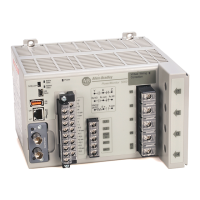504 Rockwell Automation Publication 1426-UM001J-EN-P - August 2019
Glossary
Ratchet Clause A rate schedule clause that states that billing demand can be based on current
month peak demand or on historical peak demand, depending on relative
magnitude. Usually the historical period is the past 11 months, although the
historical period can be for the life of the contract. Billing demand is either the
current month peak demand or some percentage (75% is typical) of the highest
historical peak demand, depending on which is largest. The ratchet Clause is
designed to compensate the electric utility for maintaining equipment not fully
used.
Reactance The opposition to the flow of alternating current. Capacitive reactance is the
opposition that is offered by capacitors and inductive reactance is the opposition
that is offered by an inductive load. Both reactances are measured in ohms.
Real Power The component of apparent power that represents real work in an alternating
current circuit. Real Power is expressed in watts and is equal to the apparent
power times the power factor.
Residual Voltage The minimum remaining voltage during a voltage sag or interruption.
Resistance The property of a substance that impedes current flow and results in the
dissipation of power in the form of heat. The unit of resistance is the ohm. One
ohm is the resistance through which a difference of potential of one volt produces
a current of one ampere.
Revenue Meter A meter used by a utility to generate billing information. Many types of meters
fall in this category depending on the rate structure.
Root Mean Square (rms) The effective value of alternating current or voltage. The rms values of voltage
and current can be used for the accurate computation of power in watts. The rms
value is the same value as if continuous direct current were applied to a pure
resistance.
Sag Temporary reduction in rms voltage magnitude below a preset threshold,
typically 90% of nominal.
Sequence Currents The result of symmetrical component analysis performed on a set of three-phase
current vectors. The analysis results in three sets of balanced sequence current
vectors: positive sequence, negative sequence, and zero sequence. The positive
sequence current rotates in the same direction as the original set of vectors, the
negative sequence rotates in the opposite direction, and the zero sequence has no
rotation. See also Imbalance.
Sequence Voltages The result of symmetrical component analysis performed on a set of three-phase
voltage vectors. The analysis results in three sets of balanced sequence voltage
vectors: positive sequence, negative sequence, and zero sequence. The positive
sequence voltage rotates in the same direction as the original set of vectors, the
negative sequence rotates in the opposite direction, and the zero sequence has no
rotation. See also Imbalance.

